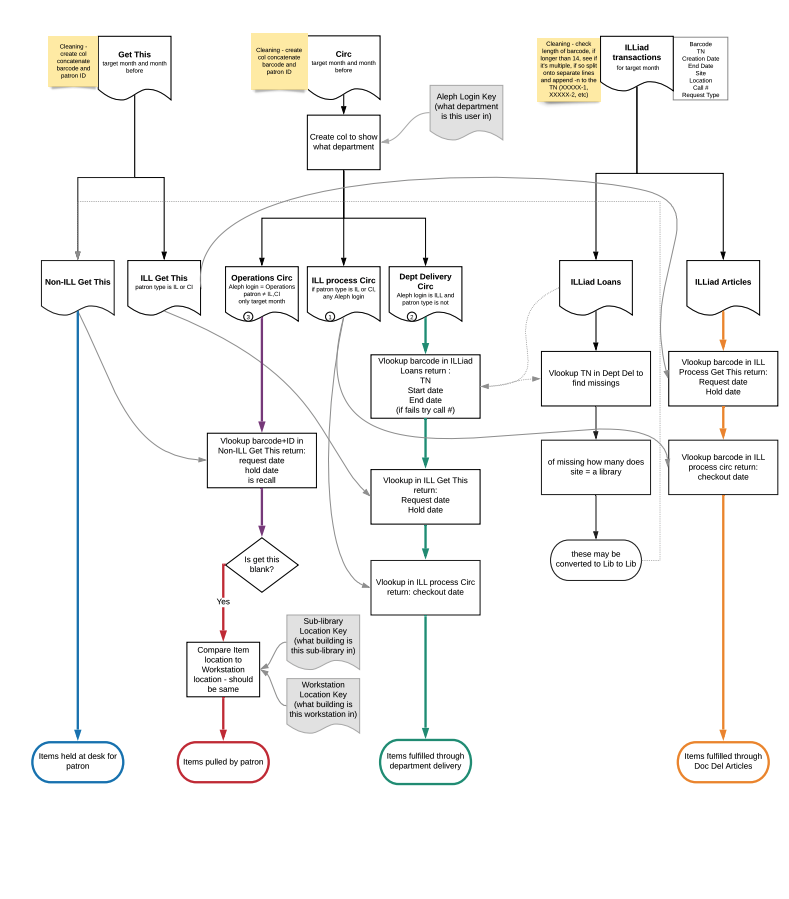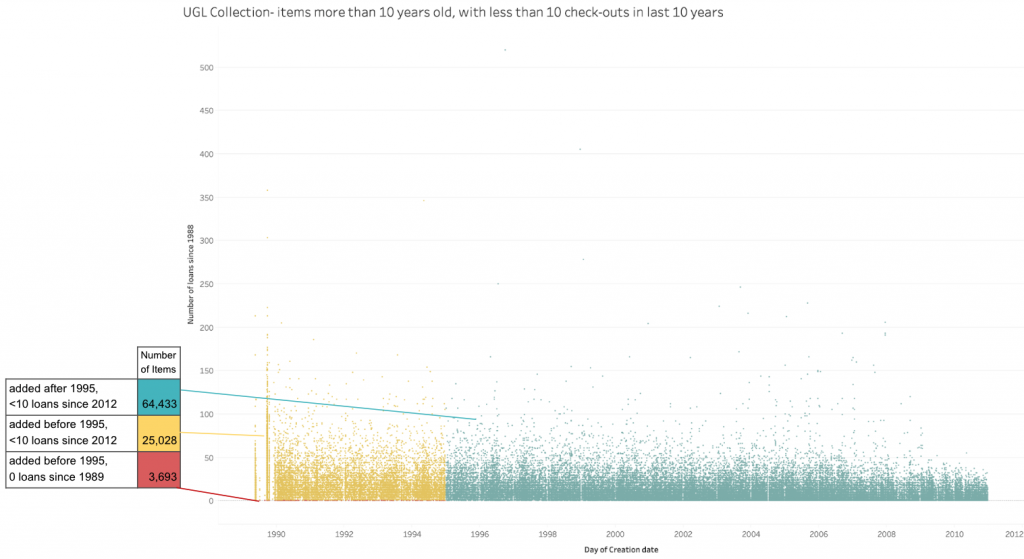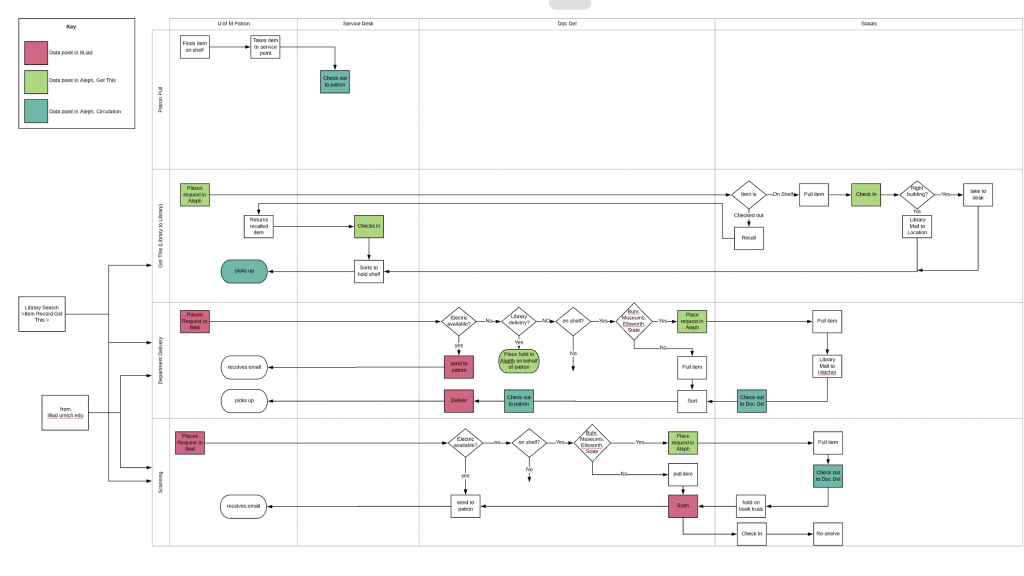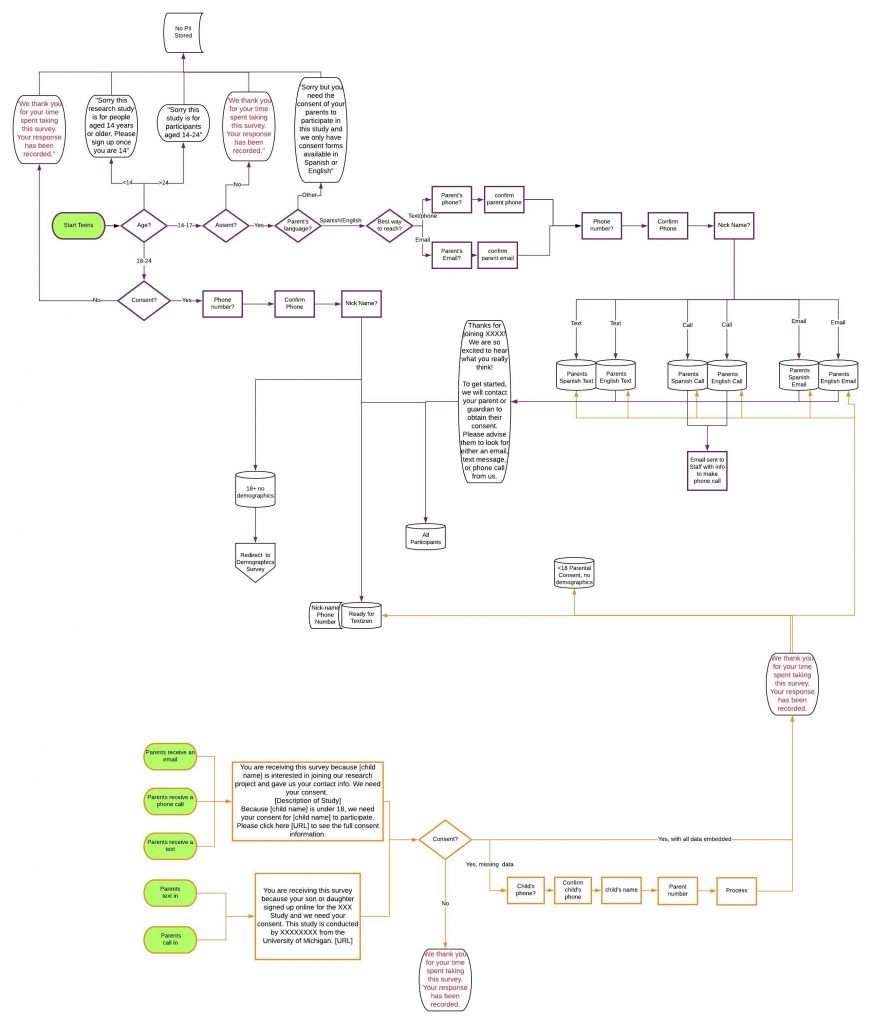I excel at projects that require careful thought about complex processes or intersecting understandings, particularly ones concerned with language or meaning. I've worked with researchers, professors, entrepreneurs, and librarians to help them understand current states, and plan and build for the future. Please contact me for specific project examples.
Good work involves an iterative process that leans more toward holistic growth than discrete steps, but I roughly divide my work into four main areas:
The problems I have worked on end up with a wide range of solutions. I've worked on mission statements, recruitment workflows, style guides, data reporting systems, websites, information retrieval systems, projects to design physical spaces, and interdepartmental workflows. I know Qualtrics, Tableau, Excel, Google Apps, and Office, but can learn new systems quickly if they are appropriately documented. I also work well with developers to make sure designs are technically feasible, and implementation matches expectations.
Research
User Research
Whether you're working on modifying an existing thing, or creating something new, it's important to understand your users; what are their needs, and goals? How do they use your product? How do they understand the space you work within? I can design and conduct surveys, interviews, focus groups, contextual analysis, usability testing, card sorts, tree tests to help you understand your users.
Context Research
Whatever you're working on a product, a service, or a revolution, it doesn't exist within a vacuum. It's pushed and pulled upon by existing frameworks including your organization's goals and mission statements, professional guidelines and best practices, and an ecosystem of related and competing offerings. I can research what those are, and what they mean for you.
Data Documentation and analysis
The first step in being "data informed" is understanding what information your data holds.
I have experience:
• working with stakeholders to understand what information they need from their data
• mapping processes that create data in order to accurately document what they represent
• conducting data exploration in database software, spreadsheets, Python and Tableau to understand data structure
• developing and documenting processes for joining data sources
• creating dashboards in Tableau and Data Studio with useful displays of information
Data exploration

This diagram documents the method needed to differentiate between 4 types of closely related processes that created data points in two systems. By understanding exactly how data variables are created, I was able to create a process for joining data from the two systems, and then separating rows by which process created them, which made it possible to assess the uses of the various services.
Data Analysis

This is graph represents the first step in a process of identifying sections of a library collection for weeding analysis.
Reality Mapping
Realities are complex, overlapping and hard to talk about. It's easier to understand what is and agree on what should be when there's something tangible to point at, draw on, and have a discussion about. Reality mapping is about all the ways to capture just what it is we are talking about, to make sure we are all agreeing on the same thing. Plus, the creative arrangement of information creates new information, and sometimes that new information is what you need to make the right decision.
I can create workflows, conceptual maps, swimlanes, process diagrams, site maps and, wire frames to help create consensus, find areas for growth, and document decisions.
Fulfillment data

Here is an example of a diagram mapping the physical process for fulfilling library item requests to the data the processes create in library systems created to support a project to assess fulfillment processes using data from multiple systems.
I Don’t Do
While, like the cat in Adventure Time, I have approximate knowledge of many things, we all have our limits. If you are looking for someone to spend most of their time doing one of the following, I'm not your best bet.
Visual Design- I know photoshop and can do basic editing of visuals; if you are looking for a complete makeover of your visual brand, I'm not the right person.
Web Development- I know enough html, php, and css to get creative within a content management system; if you are looking for a hand coded website with innovative interactions, I'm not the right person.

